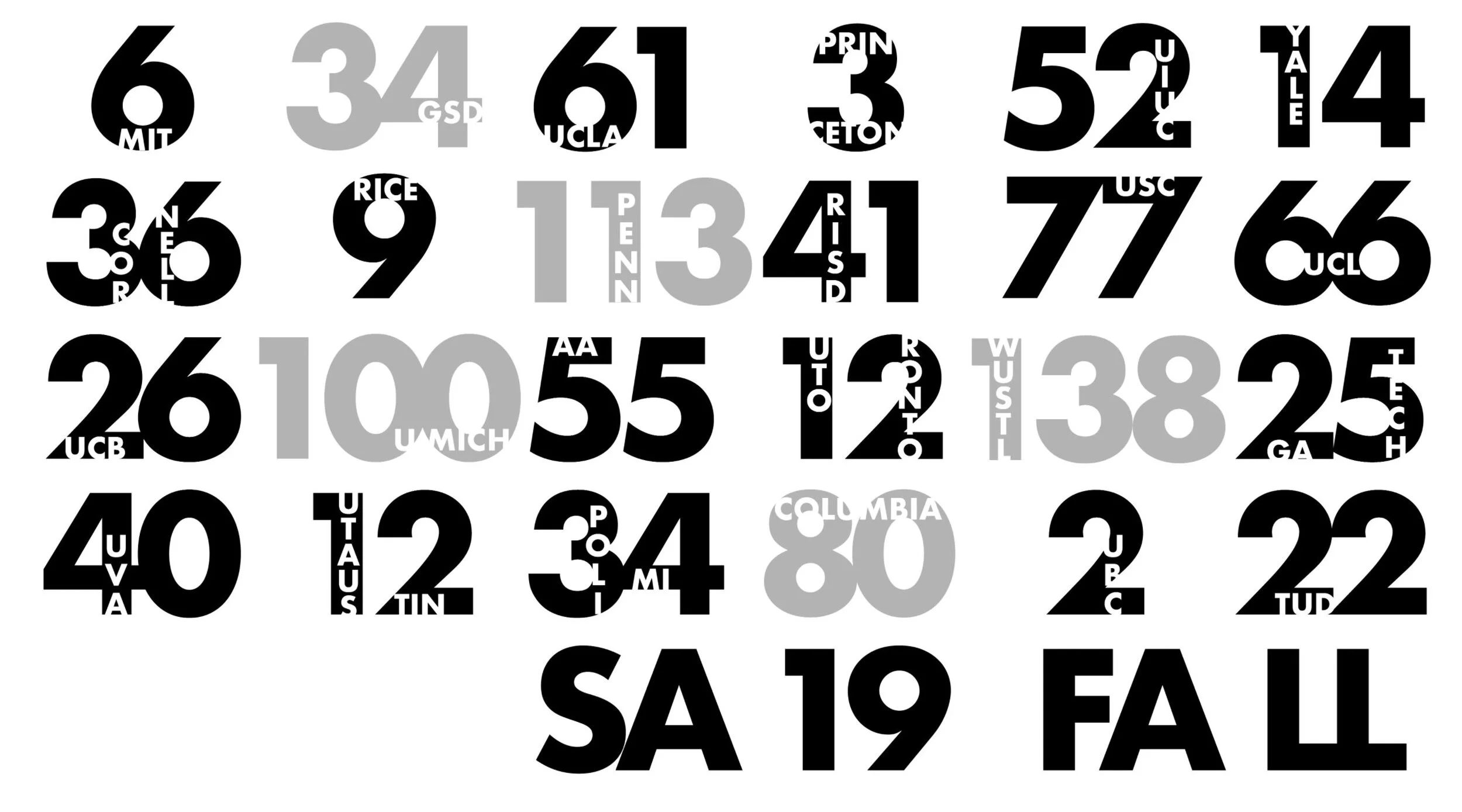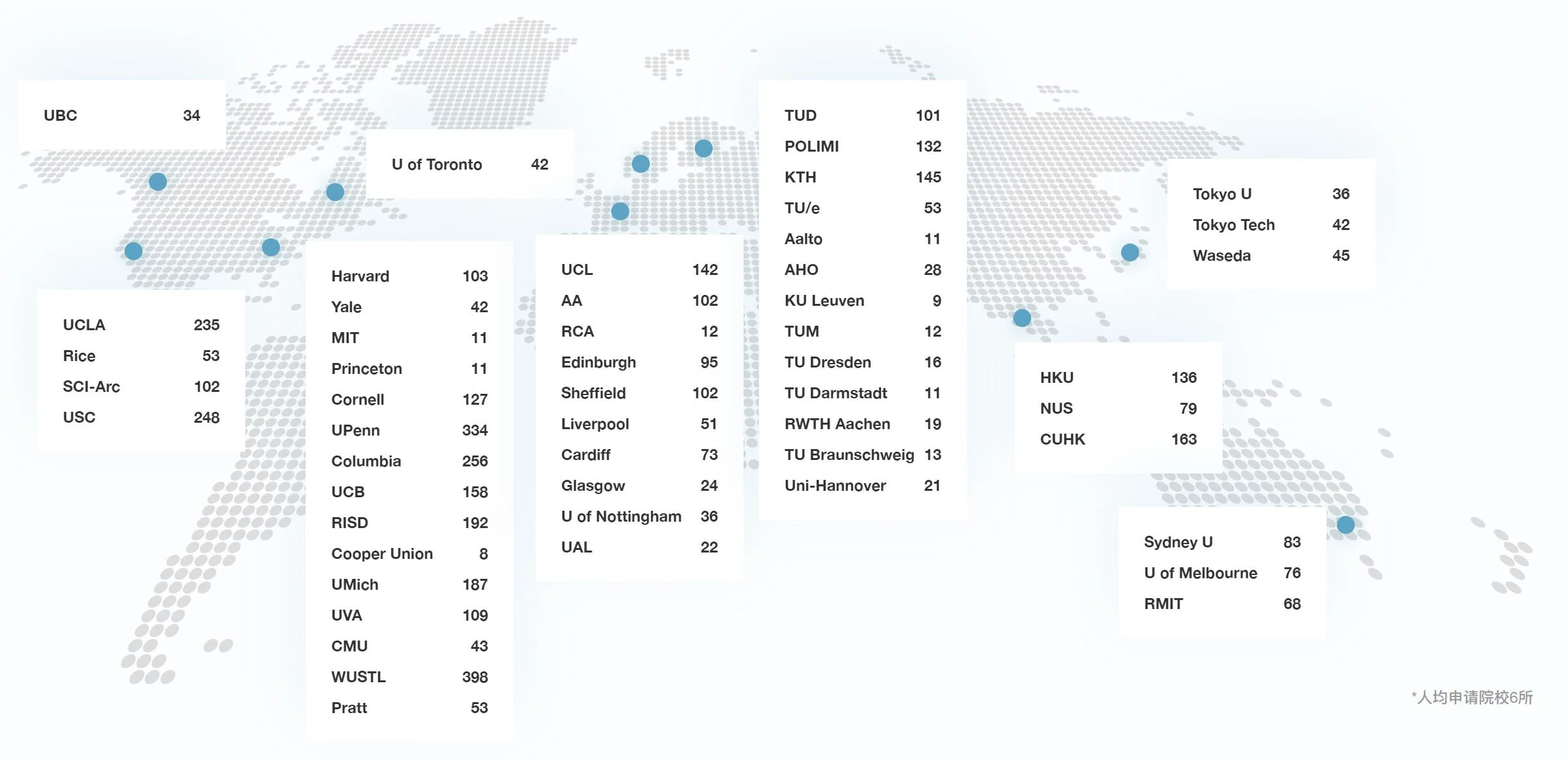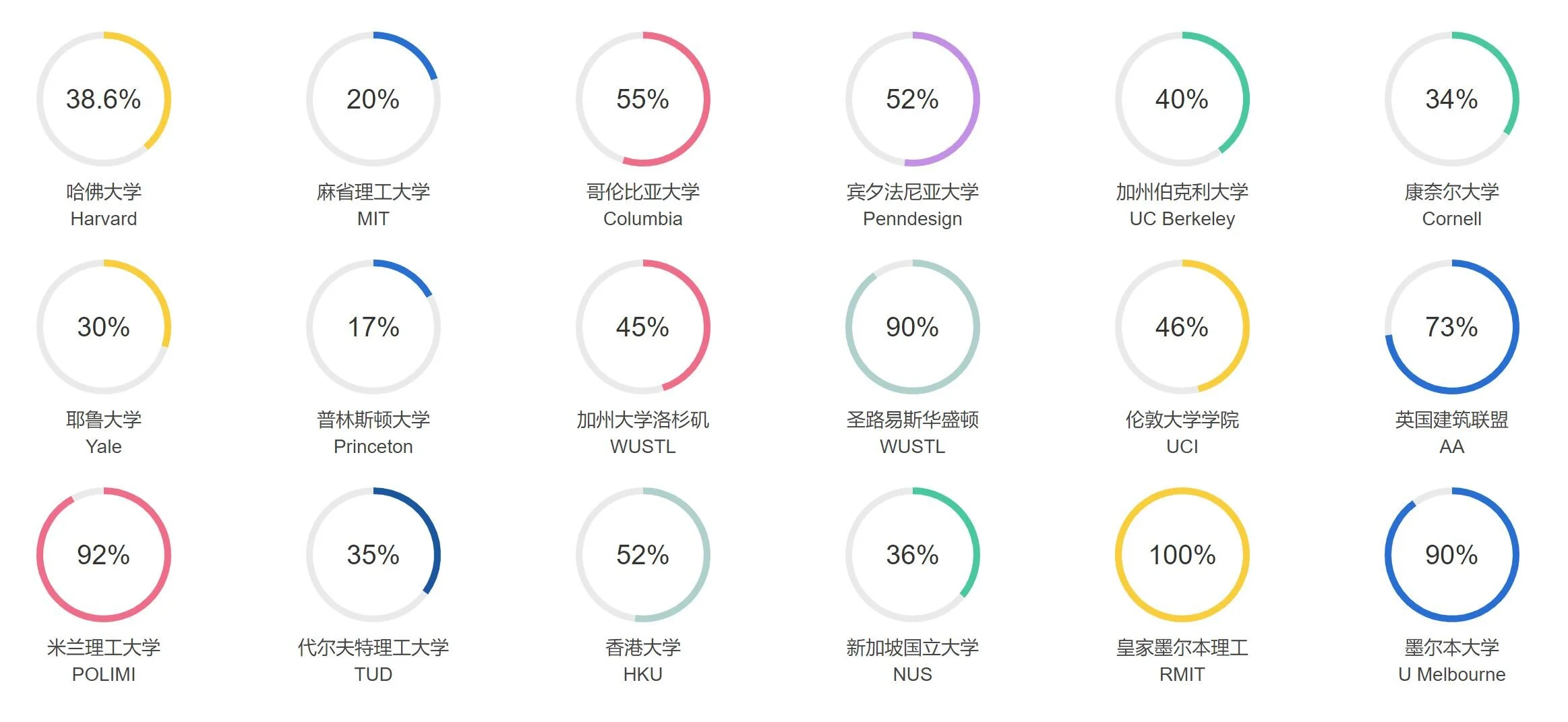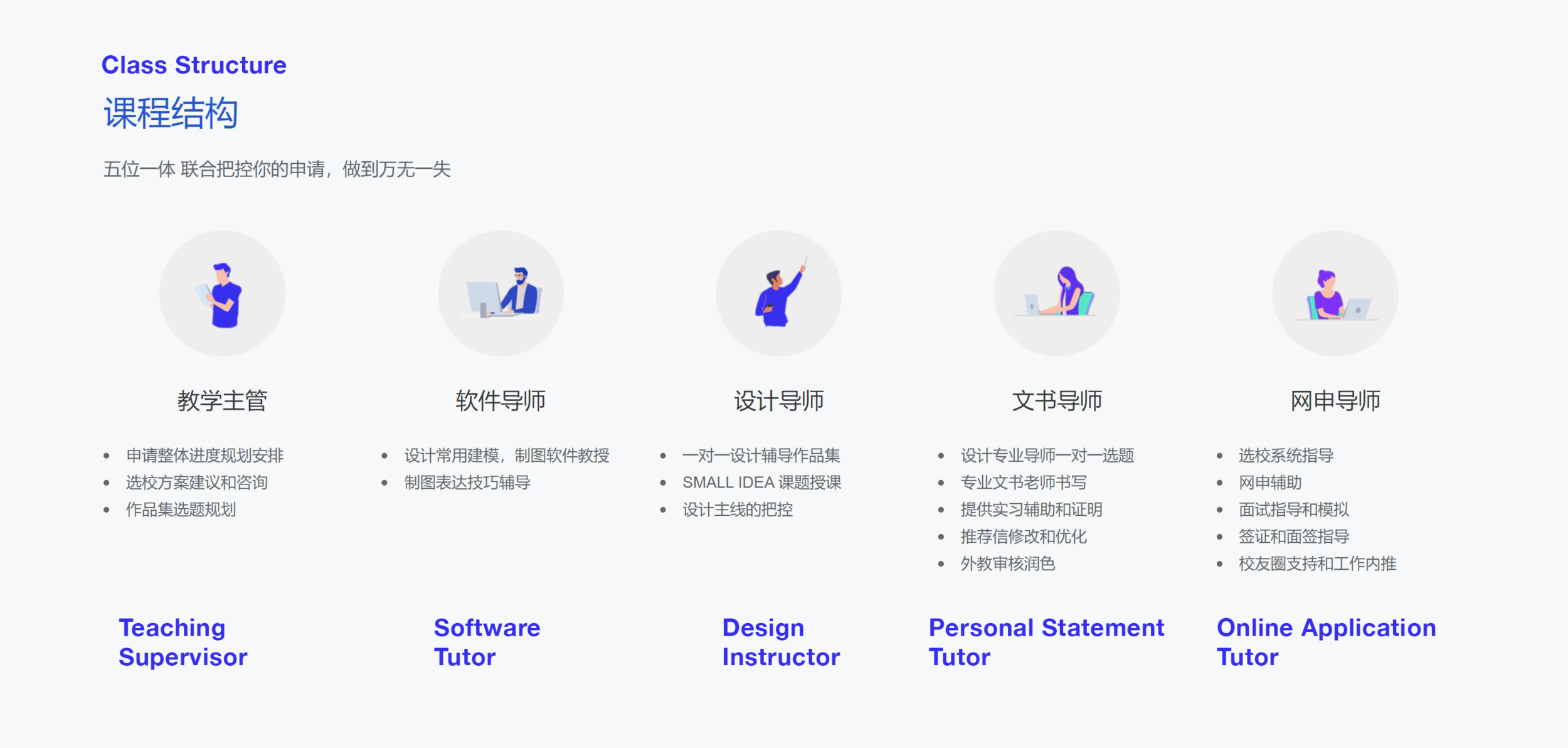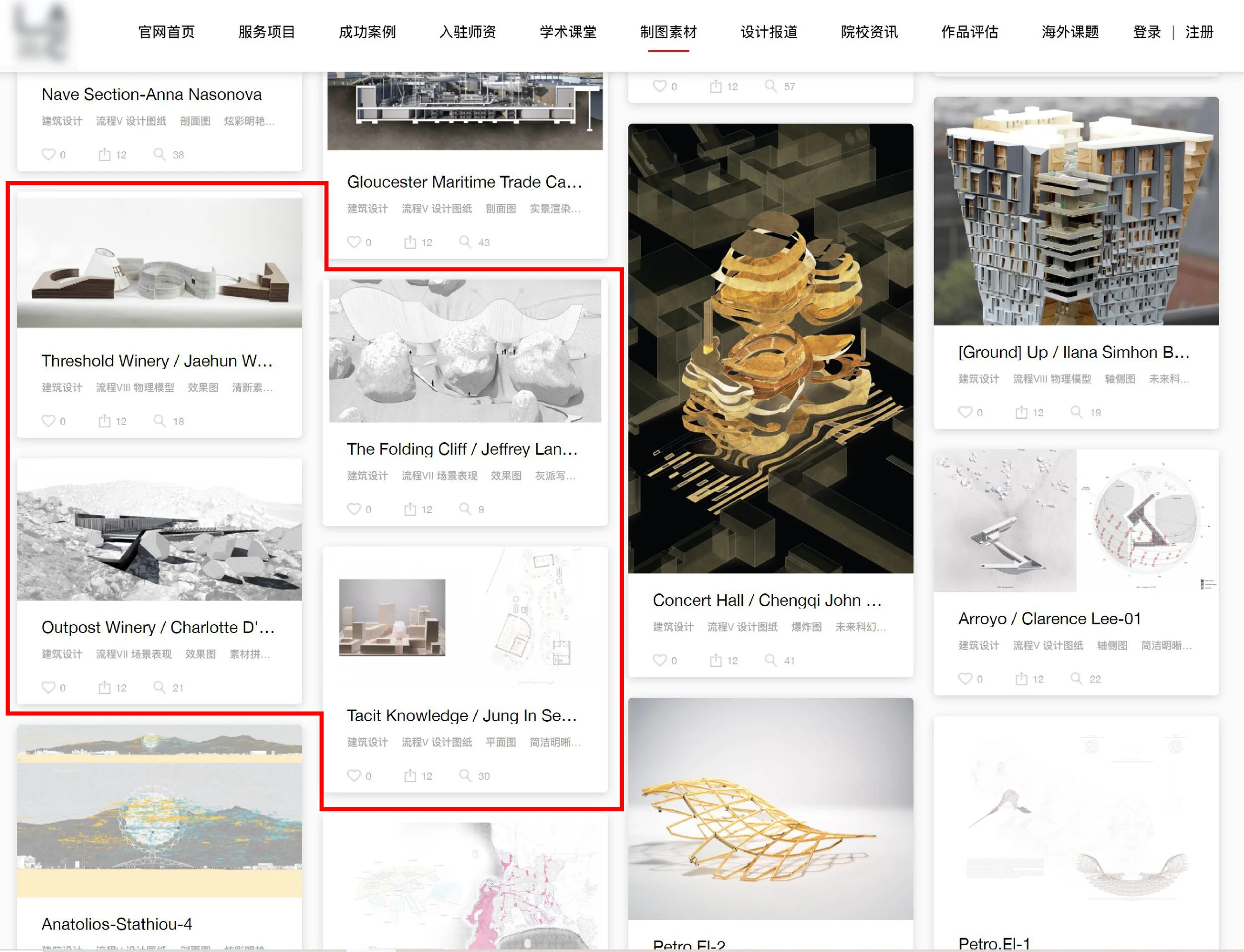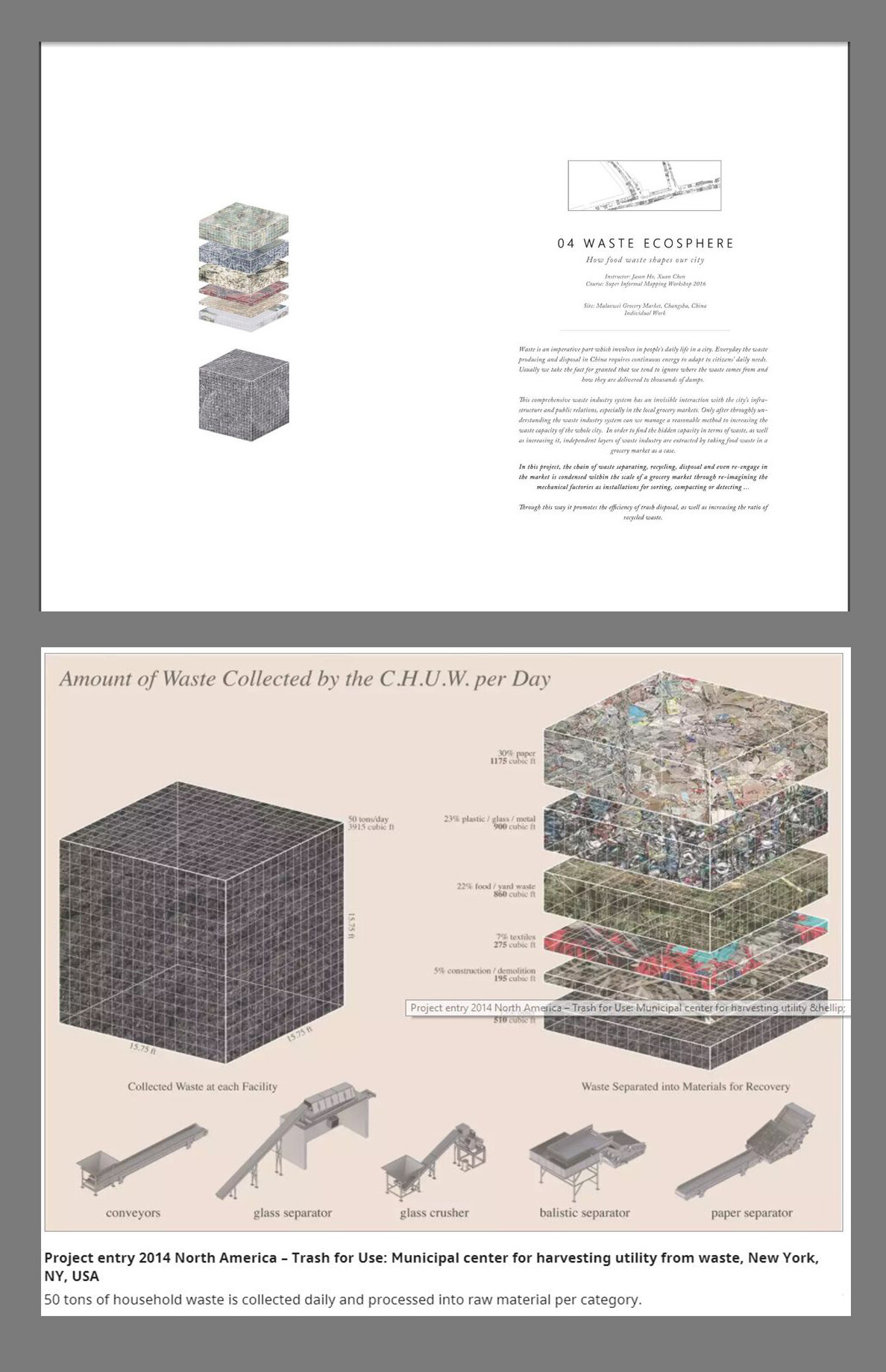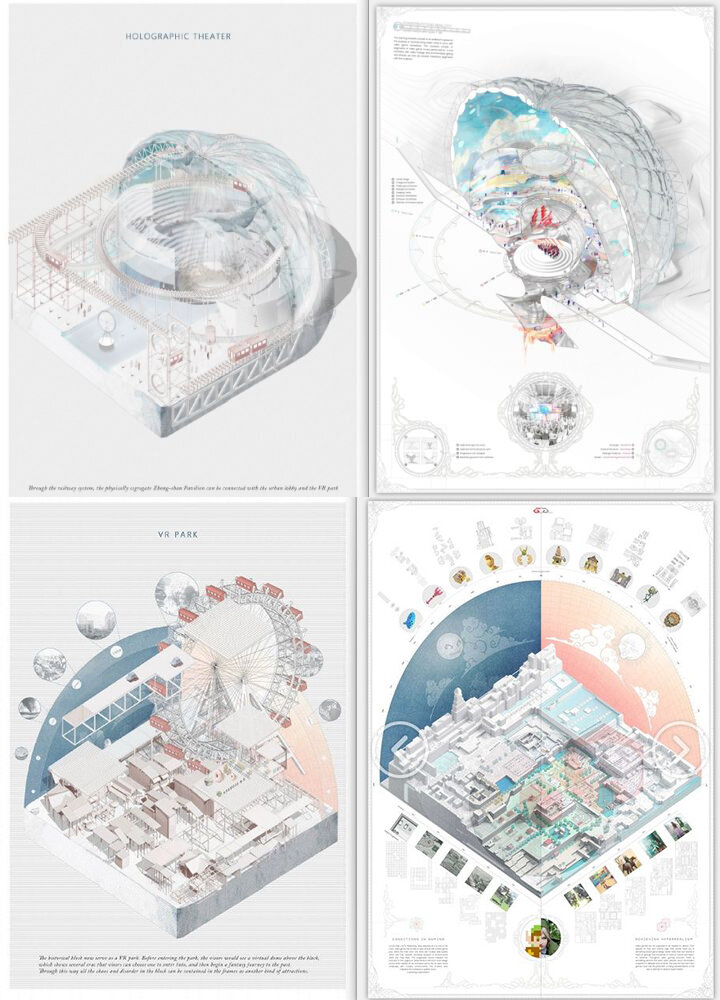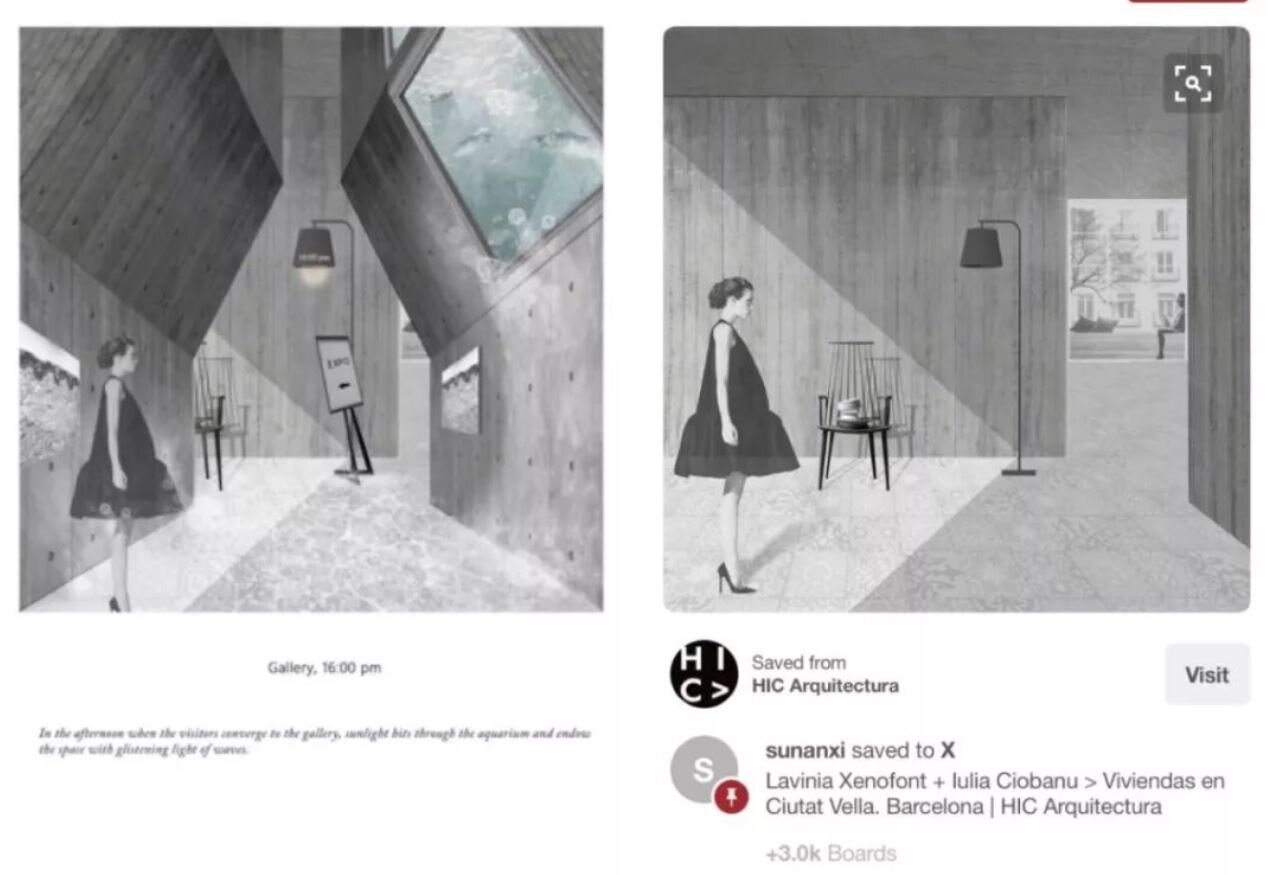A Quick Comment on Portfolio Agency
Although the title is “A Quick Comment On…”, portfolio agency is actually a complicated topic to have a quick comment on. It is a topic that I've been following and have always wanted to write about, but it is also a topic that has been hard to get my hands on. It involves many sensitive issues and a lot of different stakeholders. My attitude towards portfolio agencies has been changing as well: from an instinctive resistance and disagreement at the beginning, to more of a curiosity after meeting good friends who either teach at portfolio agencies, run one, or are admitted into architecture school through them.
I started to think about why portfolio agencies became so popular, and to reflect on what has made them such a big success. Attitudes toward portfolio agencies are generally polarized, and often depend on whether one is involved in the business. Although I’m inevitably going to cover the controversial activities of portfolio agencies, the purpose of my column is not to expose portfolio agency as a thing to be aware of (school admissions have been aware of them for a long time), nor is it a critique of these agencies per se (because even if I critique them, nothing is going to change). It is rather an attempt to critically reflect on the architectural discipline and pedagogy through the new lens of portfolio agencies (which are also not that new; they’ve existed for around a decade already).
What is a Portfolio Agency?
Image from an HR Assistant in a US portfolio agency approaching me, asking if I would like to be a part-time tutor.
Image of the job description shared with me as a “Part-Time Graduate Coach.” Notice the company slogan: The smart way to get in.
Before going deep into the discussion, let me first talk about what a portfolio agency actually is. A portfolio agency can go by many other names, such as XX design tutoring office, XX education consulting agency, XX Studio, XX institute of design, XX design classroom. etc. In fact, the only name they won't call themselves is XX portfolio agency. However, in essence, the purpose of all these businesses is all the same: to improve the quality of the portfolio in a short period for the purpose of helping students get into colleges or grad schools. Although every school's admissions office is more or less aware of the existence of such agencies, in general, most students in the United States are still unfamiliar with the service. In contrast, art and design students (including architecture students) in Asia (China, Korea, etc), who want to study abroad are usually aware of such agencies to some extent since they have a very strong presence there. In the U.S. there are also similar agencies, but usually with lower profiles.
Why do Portfolio Agencies Exist?
Any type of admission rubric will result in people finding ways to cope with that rubric. For example, China and Japan have college entrance exams (Gao Kao), so there are corresponding after-school tutoring classes. The United States requires the SAT and GRE for admission, so there are SAT and GRE tutors as well. In a similar way, Western architecture schools use portfolios as the main selection criteria for admission, so it is no surprise that portfolio agencies began in response.
In addition to the importance of the portfolio itself in admissions, the possibility of a rapid increase in portfolio quality is one reason why portfolio agencies have become so popular. You rarely see an agent who focuses on the admission of science or engineering subjects: In those disciplines, a student’s GPA alone is sufficient to prove his/her qualification. Moreover, it’s also difficult to coach students on lab experiments to publish papers, because it is a more complicated and lengthy process. In contrast, portfolio agencies are widespread, largely because the medium for evaluation is different, and images don’t always tell the stories that accurately. A beautiful drawing may come from a year of thinking and hard work, but it can also be a quick mimic completed in just one night.
Why Should We Talk About Portfolio Agencies?
First of all, scale matters. The portfolio agencies have grown too big to be ignored, and their acceptance rate is incredibly high!
Admission data (2019) for one of the largest portfolio agencies in China.
Image Credit: http://studioalpha.cn/plus/list.php?tid=43
This is admission data (2019) for one of the largest portfolio agencies in China, proudly published on their website. Considering the number of Chinese students that the MIT School of Architecture admits every year (about 3-4 in M.Arch Program and around 10 in SMarchS program), six offers in a year is pretty impressive. Note that these are the statistics from only one of these agencies, and there are many others as well (in China and worldwide). Larger schools receive even more students who have benefited from the use of this service. This particular agency got 34 offers from our close neighbor, the Harvard GSD, not to mention Washington University in St. Louis (WUSTL), where the number reached the exaggerated level of 138 offers in a single year (again this is by a single company).
This is the admission statistics from another major portfolio agency. They chose to show the cumulative number of students over the years on their homepage who received offers, as opposed to the annual offer results as seen from the previous agency (students usually get multiple offers, but only enter one school). For top-ranking schools like Harvard, they have a total of 103 alumni admitted, not to mention schools that are easier to get into, like UPenn and GSAPP, where they have 200-300 alumni.
Admission statistics from another major portfolio agency.
Image Credit: www.canopyu.com/#/index
This agency’s admission diagram shows the acceptance rates of their students applying to each of these universities.
Image Credit: www.studio01.cn/service/
These statistics demonstrate that these agencies are experts in portfolio-making. This agency's admission diagram shows something a little different: the acceptance rates of their students applying to each of these universities. MIT and Princeton are among the lowest, but still with an impressive 20% success rate. Other schools like Milan Polytechnic, WUSTL, and U Melbourne have about 90% acceptance, and RMIT even has a 100% acceptance rate.
I’m personally shocked by how successful these portfolio agents are in bringing students into these big-name universities. Other than the size of the admitted student body, the number of portfolio instructors (grad students or recent graduates from top universities) who teach in these agencies is also worth noticing. The first agency mentioned above claims to have over 100 portfolio instructors, while the second one states that it has 200. The largest portfolio agency I’ve seen claims to have 910 instructors on their website. Used for comparison, SOM (one of the US’s largest architecture corporations) (only) has 1000 employees. And then there are others working for lesser-known, small and medium-sized portfolio agencies.
Statistically, it is without a doubt that more and more students are entering top schools through portfolio agencies every year. One obvious issue raised by these numbers is that for Chinese students, it is becoming increasingly difficult to get into the best architecture schools without an agent. From this point of view, it would be unwise to lay the blame squarely on those students from mainland China who turn to portfolio agencies for assistance. These students simply have no choice when everyone else around them is getting an extra helping hand from those agencies. Western architecture schools have also become accustomed to these fine-tuned portfolios, thus inadvertently raising the bar of admission. As a result, even students educated in the West are feeling pressured to choose portfolio tutoring services.
In addition to the anxiety they create for new applicants, portfolio agencies can also make those students who choose not to buy their service feel unfair. Many of them have the feeling that it is because of these portfolio agencies that they cannot get into their dream school. The success stories of these agencies, who polish average student applications to get into top schools, can sometimes make those who try to be honest and prepare the application on their own feel like fools. The high cost of these portfolio agencies also raises issues about equality in education as well. Portfolio agencies typically charge 30,000 to 80,000 RMB per student in China (around 5k to 12k USD). This is not a trivial amount. We already know that higher education can be a privilege, and studying abroad is already a huge expense for most Chinese students. Now they also need to pay that extra fee to the portfolio agencies even before they depart to ensure their acceptance abroad. Architectural education in the US is already expensive and exclusive, and the emergence of the portfolio business has further exacerbated this unfairness.
The Controversial Teaching Method
In addition to the scale of the impact on the current university admissions mechanism, one of the biggest controversies involving portfolio businesses is the way they operate.
Architecture is still based off creative design, and the portfolio is supposed to be the self-presentation tool that creatively communicates one’s design ability, level of commitment, ideas and personality. What portfolio agencies often do is the opposite.
Class structure diagram from a portfolio agency website. English translation added by the author.
Image Credit: http://www.studio01.cn/service/
Most of these portfolio agencies provide similar services, including a teaching supervisor, who is responsible for planning for the application schedule, advising on school selection, and planning the corresponding portfolio. Usually, there is a free assessment prior to the purchase of the service to determine what level of graduate school the student is suitable for (GSD level, GSAPP level or WUSTL level, for example) based on his/her undergrad school, portfolio, and GPA. There are also software tutors who teach modeling software (mostly Rhino and Grasshopper) and tricks to make the drawings and renderings look more polished. Then there are design tutors, usually graduate students from the prestigious graduate schools, who either work one-on-one, or with a small group, to design and polish their clients’ portfolios and fabricate narratives for each student. Personal statement tutors are also necessary as part of the tutoring package. They are responsible for adorning students’ admission packages with unique personalities (If they are not responsible enough, they might just apply a template). Last but not least, there are the online application tutors, who are mainly responsible for guiding students on how to fill out the school application system and preparing tips for online interviews. The agencies might also provide visa application guidance and alumni referrals. In addition to these standard services, many agencies are now offering a wide range of additional services, such as revising recommendation letters, providing certificates of internship to embellish resumes, holding regular academic lectures on trendy topics (Anthropocene, Post-digital, Object-oriented ontology), organizing small classes to help students win competitions, or holding classes that copy studios directly from top US grad schools; and now there’s even specialized architecture Ph.D. application service.
This portfolio agency collected a lot of drawings and models from the internet (basically building their own Pinterest), and displayed them on their website, in the section called “materials for drawings”. Not surprisingly, I found my classmates' drawings at MIT as well. Collecting references for architecture students is a very common behavior, but it starts to feel complicated to see your own work or the work of people around you being taken by others to earn money.
Image Credit: http://www.lacstudio.com/works/
Putting aside the obviously problematic issue of ghostwriting for personal statements and letters of recommendation, the portfolio business is also controversial because of its teaching method. In order to quickly improve the quality of the final work in a short period of time, agents usually focus on architectural representation. Often times, the portfolio agent will collect drawings from famous overseas schools for students to imitate, which is why the drawings come out similar.
Compared to the emphasis on representation, portfolio agencies do not pay much attention to design itself. On the one hand, this is because of time constraints, while on the other hand, there is reason to think it might be related to the teaching quality itself. Some of the best architecture students I know are teaching in portfolio agencies. I'm sure they will be responsible and helpful instructors and that their students could gain a lot from them. However, there are just as many good teachers as there are irresponsible teachers in the mix. Even those who are involved in the portfolio business admit that nowadays, everyone is teaching how to make portfolios regardless of ability. Many times, students who have just been admitted to a top school through a portfolio agency, before even officially starting their studies, are recruited to teach a new class of applicants. They might be able to pass on their portfolio-making experience, but their judgment on what makes a good drawing or design can be misleading.
As opposed to inspiring students to be creative and to find their own designs, most of the time a portfolio agency’s method involves providing a lot of reference projects, drawings, or portfolios from target schools, and guiding applicants to imitate the style and design. The resulting projects are often homogeneous and feel like a collection of fragmented pieces. If one looks at enough of these portfolios, one can start to notice the similarities among them.
When design homogenization has developed to the extreme, it can lead to plagiarism. The portfolio agencies mentioned above have all been involved in plagiarism controversies to a greater or lesser extent. There is no more famous incident than the one that happened in 2018, where a student got accepted to MIT and Yale using a portfolio agency. Her portfolio agency put images of her portfolio in their promotional article, and then a Princeton alumnus noticed that one of the images in the portfolio was originally from a Princeton thesis. Both the student and the agency claimed that the image was only used as source material and that it had nothing to do with the major design concept, stressing that this was within a normal range of referencing in the architectural discipline and therefore should not be considered plagiarism (they even cited Duchamp's theory). Because of the sensitive nature of this topic, the story soon hit the headline on Zhihu (the Chinese equivalent of Quora) and attracted widespread attention, many from outside of the architectural discipline, garnering more than 1.6 million views. Many people outside the architecture community commented that this action should not be excused just because it’s considered as “reference” in the design field. It was clearly plagiarism in the eyes of people from outside the discipline. Many indignant architecture students (some of the applicants who got rejected by these same two schools (MIT and Yale) continued looking for images in that student's portfolio that were similar to the ones on Pinterest. In the end, under the numerous reporting letters, MIT and Yale eventually withdrew the student's offer (this student went to Rice University eventually, because Rice didn’t consider it as plagiarism). Before this incident, portfolio agencies would normally show students’ portfolios and their actual names in their promotion articles to brag about their portfolio “make-up” skills. Since then, the portfolio agencies have become more cautious, choosing to use aliases and not showing full portfolios anymore.
Image 1: A drawing from a Princeton thesis was used directly in the portfolio. Image 2: A drawing found on the Internet was directly collaged in the student’s own drawing. Image 3: Some drawings in the portfolio are considered too similar to one of the projects from AA by netizens. Image 4: The layout idea was considered too similar to a portfolio done by a portfolio instructor teaching at another portfolio agency. Image 5: A drawing in the portfolio was considered too similar to an existing drawing on the internet by netizens. Do you think this is plagiarism or not?
Images Credit: https://www.zhihu.com/question/271911643. More discussion (in Chinese) can be found on the website.
In addition to plagiarism controversies, some other common portfolio frauds include writing a collaborative project as one's own, borrowing a project from a fellow student who is not applying to study abroad, or swapping projects with students applying to another country (those applying to the UK and those applying to the US swap projects with each other so that each person's portfolio looks like they have a few more projects). Sometimes there are much more serious accusations. One year after the incident mentioned above, in 2019, an undergrad student from Southeastern University (one of the best architecture schools in China), who got into the GSD MAUD program with the help of the portfolio agency, was accused of plagiarism by his undergraduate classmates (who listed the copied drawings and chat logs between them as evidence). It was later revealed by others that the accused student also paid to let other people do portfolio projects for him. This time, after things were exposed, the student's portfolio agency immediately disassociated with him and revoked his admission guarantee as punishment. Just like the last time, the GSD rescinded his offer under the numerous reporting letters from angry students (but he still got into GSAPP the following year). These “ghost portfolio-making” practices are hardly directly related to portfolio agencies. After all, directly doing projects and making portfolios for students are rare, if any, and the portfolio agencies are careful not to put such things on the table. But because of the opaqueness of their operations, the portfolio agencies are often called in and blamed when such things are exposed. These incidents also reflect the lack of self-monitoring inside these portfolio agencies, and there are limited consequences an agency can do for dishonest students compared to the harsh penalties of the universities.
Currently, most portfolio agencies include integrity clauses in their service contracts and some of them also offer academic integrity lectures (just like what US universities do).
Why It's a Complicated Thing to Talk About?
From what is described above, the portfolio agency is clearly both a complex and problematic practice. Schools are aware of their existence, but they don't always have a way to discern if a student has used the portfolio agency service or not, so many times they simply turned a blind eye. But as stated in the beginning, the purpose of this column is not to brand the portfolio agencies as an unethical business, but rather present a detailed description of portfolio agency operations to lay the groundwork for a discussion on the architectural discourse and pedagogy of US universities. It is exactly the value system of these architecture schools that have induced the emergence of these portfolio businesses. As mentioned before, any type of selection process will lead to ways to cope with the rubric. If the portfolio agency business is so problematic, doesn't that also mean that the current admission standards or the value judgment system are problematic as well?
The next article will continue to discuss issues around portfolio agencies, but focus back on the architecture school, on the questions the portfolio agency brings up about core aspects of architectural education, such as whether an architectural education is gradually reduced to a portfolio education, the role of the instructor in teaching (what is the difference between learning from the portfolio agency instructor and learning from the TAs/instructors in the university), how the culture of emphasis on representation and “big concept” in American architecture schools is reflected in admissions, how Eurocentrism in architecture schools is affecting overseas applicants, and what can architecture schools learn from portfolio agencies in reverse.
Random Thoughts
Imagine one day when students don’t need to go to portfolio agencies to mimic the style of their portfolios, instead, they just use an AI to do the job.
(Video above is a portfolio StyleGAN2 model trained from more than 1000 images from architecture students’ portfolios with 8k steps, trying to extract certain common threads through machine vision. Video by author.)


